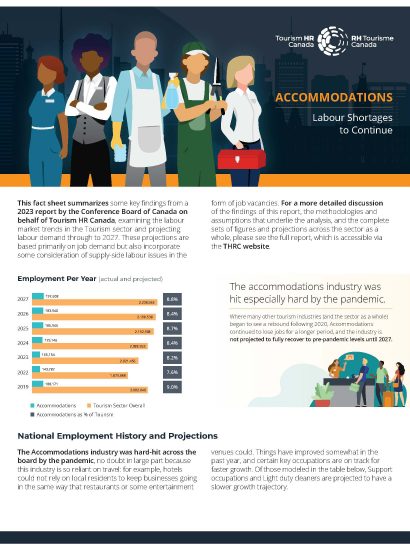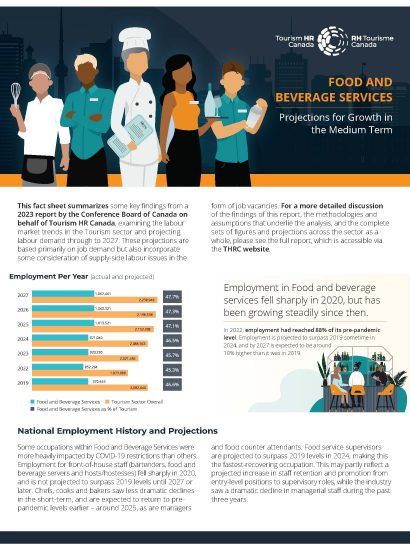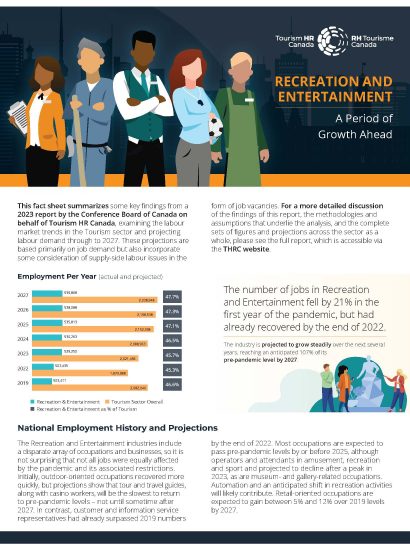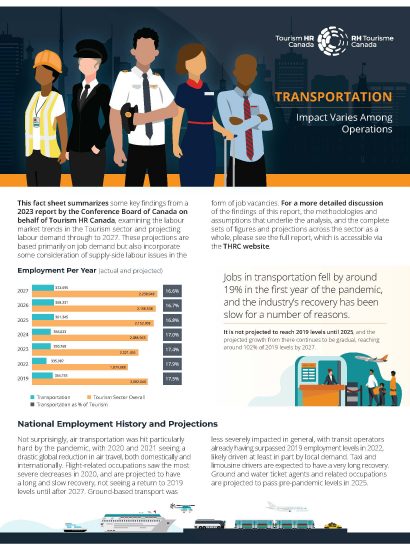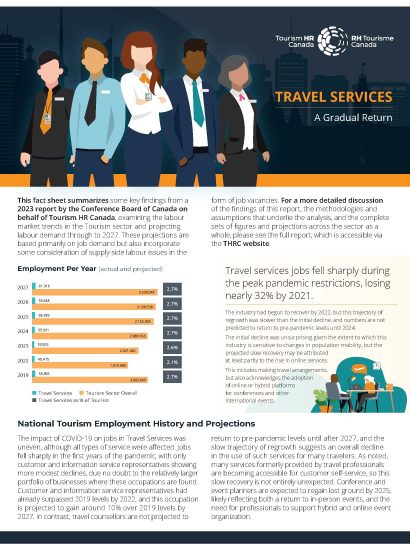Labour Demand and Supply Analysis
The Future of Canada’s Tourism Sector – Labour Demand and Supply Analysis
Working with the Conference Board of Canada’s Economic Research Division, Tourism HR Canada has updated its employment projections in tourism, and extended the envelope of projection out to 2040. These projections are available at the national and provincial levels, and incorporate both occupations (through the National Occupational Classification system) and industries (the North American Industry Classification System). Limited projections are also available for select metropolitan areas across the country.
This final report provides projections of labour supply (people available for work), labour demand (employers looking for staff), and the gap between the two. It also includes a high-level overview of survey results and a qualitative analysis of focus group discussions around business conditions.
Among the key findings:
- By 2040, the labour gap in tourism will be minimal, but there will be marked differences between industry groups. Food and beverage services is expected to have a shortfall of around 28,000 workers, while recreation and entertainment will have a surfeit of nearly 18,000 people available for work.
- In the short-to-medium term, the tourism workforce will continue to face challenges around retiring baby boomers and limited engagement from the younger workforce.
- Tourism operators report housing and transportation issues as major challenges when it comes to attracting and retaining their workforce.
- Models suggest that increasing retention by 25% could see annual revenue increases across the sector of $2.4B through to 2034.
- Around 75% of tourism operators anticipate continued moderate to heavy reliance on immigration programs to meet their future labour needs.
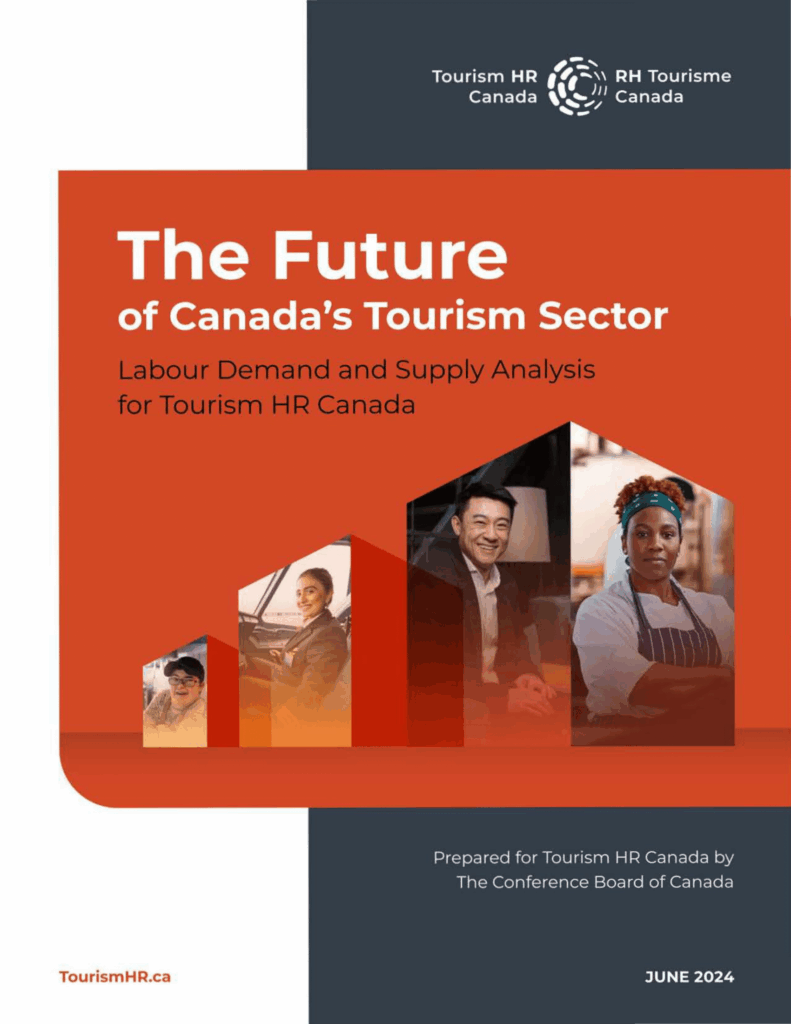
Tourism Employment Projection Factsheets
Tourism HR Canada also offers summaries for the five different tourism industry groups. These provide a high-level overview of some of the anticipated pressure points that businesses are likely to face in the next few years; they are not cast-iron guarantees, of course, but they are useful starting points for operators and sector associations in planning for the future.
Note: These factsheets provide interim projections (modeled in 2023), extending out to 2027. For a more complete analysis, please see the full report.

